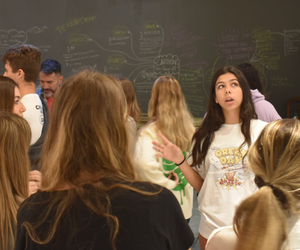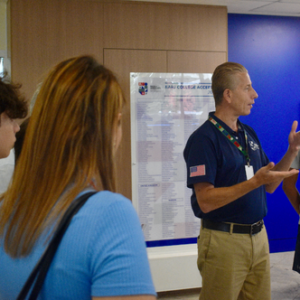Can You Hear Me? Are You Listening?
Schools are complex communities composed of many differing opinions and perspectives. Each individual or group view shapes the way a decision or direction is perceived. To foster a school environment that is inclusive, transparent, and open, it is important to provide opportunities for stakeholders to be involved in the decision-making process. Involvement varies among the different parties, and is impacted by the relationship that individuals have with a change, position or improvement.
Too often, adults gather around the table discussing and debating school changes and making decisions without consulting those who are impacted the most. The group that can sometimes be omitted from the process is an important group: students! Our students are in a position to offer ideas and opinions generated through their daily school experiences.
Student input can significantly improve a district and/or school’s quality of decision making; students offer a perspective that is otherwise lost from that process. We each know some teens whose insight and wisdom make them capable of thoughtful, perceptive, well-measured decision making. Our efforts to educate would benefit from including the voices of these students. (Phillips, 2015)
When we discuss including students’ ideas, we are acknowledging that important issues and decisions have repercussions on their daily school lives. Student voice is about providing the opportunity for meaningful feedback on meaningful topics that students truly care about. Do we know what is important to our students? What we think is a minor decision that will have very little impact, could be viewed very differently by students. Do we take the time to talk to students? Do we listen? If we did, would we be surprised by what they would say?

It is important that we think about, or attempt to define, what “meaningful” is to our students. Recently, I made a decision that changed one of our procedures. It seemed very simple and not a significant change from our current practice. Within the first hours of its implementation, I received an email from a student questioning the change. The student expressed concern that there was a policy change that students were not aware of and that there had been no consultation with the students.
Later that day, I met with the student and explained the reasoning behind the decision. The student understood the rationale for the change, but the concern was not about the change in procedure; it was the fact that the students weren’t included and didn’t have prior knowledge about the decision. The student just wanted to be part of the process, not necessarily part of the outcome or direction. Just knowing that the change was being made would have made a big difference for that student.
We have structures that incorporate students in the decisioning making process in Lower, Middle, and High School. In all divisions, Student Councils offer an avenue to gather student feedback for school improvement. The idea is that this group of student leaders would represent their divisions and grade levels. We also use formal and informal student surveys as a mechanism to generate ideas and suggestions from individual students.
The way we respond to, respect, and value students’ ideas is what is important. Inviting students to be part of the conversation before a change is implemented or a decision is made, illustrates to students that their voicematters. When students bring valid issues forward and decisions are altered or modified, it teaches us about prioritizing the inclusion of student participation in the process, not just for feedback after the fact.
Student feedback after actions are determined is still valuable, but it changes the way the students feel and the message we are sending does not communicate partnership. Implementing a new policy or procedure together, changes students’ thoughts from “they” made this decision and “we” needed to argue and fight for change, to, our input was acknowledged and considered. Both are examples of providing an opportunity for student participation, but one definitely feels better, for both the adults and students involved.
Listening to students identifying school problems and possible solutions reminds teachers and administrators that students possess unique knowledge and perspectives about their schools that adults don’t necessarily have. (Sindelar, 2019)
Involving students as an integral part of the school improvement process requires intentionality through the development of structures and processes where student input becomes the norm. If students are part of the regular process for school improvement, they will begin to understand the processes, start to identify problems, and initiate ways in which we can improve.
This is a cultural shift, a different way of thinking, and an approach that fosters an open and transparent environment where communication flows in both directions. We need to get away from making decisions “for” students to making decisions “with” students. We need to build in structures that provide opportunities for students to be included when we are tackling issues.
Create intentional spaces and avenues for gathering ongoing student feedback. Building a culture that empowers students to provide feedback and engage as co-creators of school culture doesn’t happen overnight. But creating consistent spaces for feedback helps strengthen the role of students as partners. (Bartlebaugh, 2017)
How do we build a culture that incorporates students’ ideas in the strategic direction of the school? We should begin by asking them! It’s amazing what we can learn from students.
Sources:
Bartlebaugh, Hannah. “Using Student Feedback to Improve School Culture”. Getting Smart. 8, January, 2017. www.gettingsmart.com/2017/01/
Sindelar, Justin. What Student Voice Is — And Isn’t. “Student Voice”. Medium.com, 25, April, 2019.medium.com/student-voice/what-
Phillips, Mark. “Increasing Student Voice in Local Schools and Districts”. Edutopia. 23, April, 2015.
Image credit: http://www.
Jamie Robb
Gávea Upper School Principal



